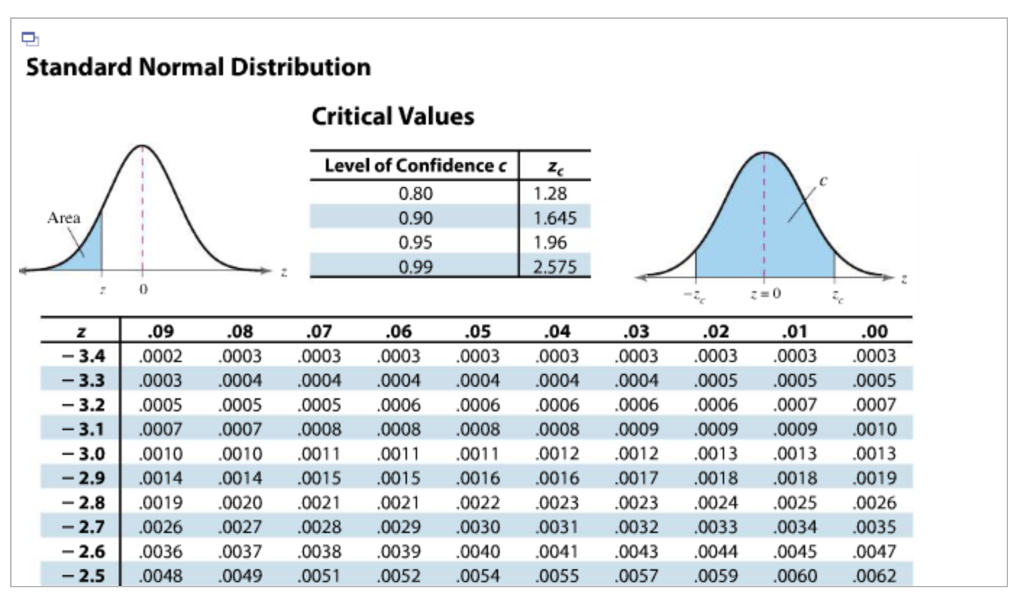
In this case, because the mean is zero and the standard deviation is 1, the Z value is the number of standard deviation units away from the mean, and the area is the probability of observing a value less than that particular Z value. This table is organized to provide the area under the curve to the left of or less of a specified value or "Z value". Probabilities of the Standard Normal Distribution Z So, the 50% below the mean plus the 34% above the mean gives us 84%. That is because one standard deviation above and below the mean encompasses about 68% of the area, so one standard deviation above the mean represents half of that of 34%. The table in the frame below shows the probabilities for the standard normal distribution. Examine the table and note that a "Z" score of 0.0 lists a probability of 0.50 or 50%, and a "Z" score of 1, meaning one standard deviation above the mean, lists a probability of 0.8413 or 84%. For any given Z-score we can compute the area under the curve to the left of that Z-score.

Since the area under the standard curve = 1, we can begin to more precisely define the probabilities of specific observation. After standarization, the BMI=30 discussed on the previous page is shown below lying 0.16667 units above the mean of 0 on the standard normal distribution on the right. However, when using a standard normal distribution, we will use "Z" to refer to a variable in the context of a standard normal distribution.


To this point, we have been using "X" to denote the variable of interest (e.g., X=BMI, X=height, X=weight). For the standard normal distribution, 68% of the observations lie within 1 standard deviation of the mean 95% lie within two standard deviation of the mean and 99.9% lie within 3 standard deviations of the mean. The standard normal distribution is centered at zero and the degree to which a given measurement deviates from the mean is given by the standard deviation. The standard normal distribution is a normal distribution with a mean of zero and standard deviation of 1.


 0 kommentar(er)
0 kommentar(er)
